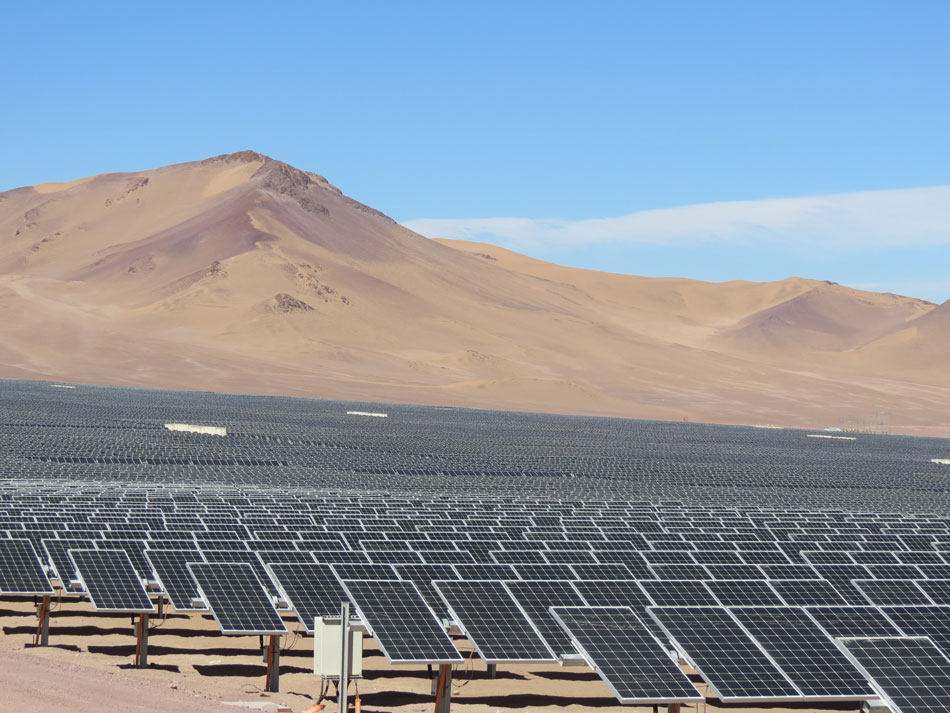- Photovoltaic technology uses solar radiation to generate electricity
- Installed photovoltaic panels in photovoltaic farms include a semiconductor sheet. The energy carried by solar rays, excite the semiconductor electrons until a current flows in the modules.
- Photovoltaic technology makes generating clean electricity possible, both on a large scale (for mass consumption) and a small scale for rural electrification in remote locations.
Photovoltaic Solar Park
- The Atacama Desert is certainly not the largest in the world; nevertheless, it has the best conditions in the world for generating electricity through solar energy and photovoltaic technology: The average annual radiation is 2,500 kWh/m2 (GHI), with low rainfall (less than 2 mm per year) and approximately 4,000 hours of sunlight per year.
- In recent years, the installed capacity of photovoltaic plants has increased vigorously: in 2013, there were less than 100MWp, whereas, in 2020, there are more than 2,700 MWp of generation capacity with photovoltaic systems installed in the Atacama and with more projects still under development.
- Another reason for the rapid growth of photovoltaic projects in Chile is the drop in technology prices in recent years. Since 2015, GIZ has published a “Photovoltaic Price Index” to provide a valuable overview of installing solar systems for self-consumption. For example, depending on the size of the installation, the 2019 index shows a price drop of 6 to 18% between 2017 and 2018.
